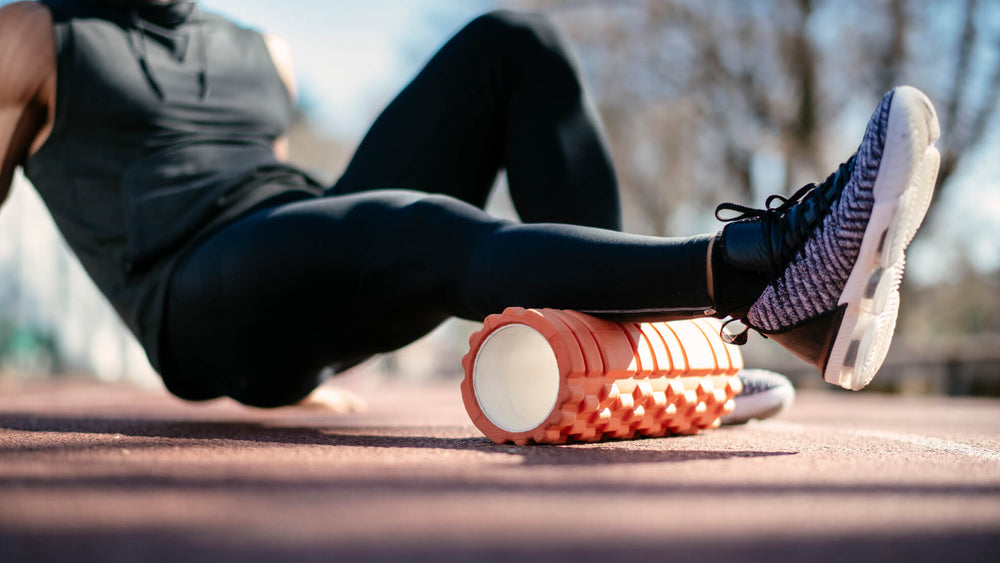An Air Quality Guide for Endurance Athletes

Unfortunately, wildfires and pollution are likely to only increase in frequency and severity as climate change progresses meaning outdoor athletes will, at some point, face a pressing dilemma: Is it safe to engage in physical activity outside when the air quality is compromised? Use this guide to understand how to evaluate air quality and make decisions that don’t sacrifice your health or fitness.
Understanding Air Quality and Wildfire Smoke
The Air Quality Index (AQI) is a valuable tool that helps populations assess air pollution levels in their area. The AQI categorizes air quality into several tiers, ranging from "Good" to "Hazardous." When air quality deteriorates — due to wildfire smoke, pollution, or other causes — specific health risks arise, particularly for those who engage in outdoor activities.
Wildfire smoke contains particulate matter (PM), which is classified into two categories: PM10 and PM2.5. PM10 includes inhalable particles with diameters of 10 micrometers or smaller, while PM2.5 consists of finer particles that are 2.5 micrometers or smaller. The latter poses the most significant health risks, as these particles can penetrate deep into the lungs and even enter the bloodstream, leading to respiratory and cardiovascular issues.
The Risks of Exercising in Poor Air Quality
For endurance athletes, outdoor exercise involves higher intensity and longer durations, which can significantly increase the amount of polluted air inhaled compared to someone who is just grabbing the mail or taking their dog on a short walk. Research indicates that while running or cycling, the average person breathes approximately 40 to 60 times per minute, versus about 15 breaths per minute at rest. This increased intake of polluted air can exacerbate existing health conditions and lead to new complications such as:
- Respiratory Problems: Endurance athletes may experience coughing, wheezing, and shortness of breath, especially if they have pre-existing conditions like asthma
- Cardiovascular Stress: Even short-term exposure to high levels of PM can alter cardiac rhythm and initiate systemic inflammatory responses, impacting performance
- Impaired Immune Function: Wildfire smoke can weaken the immune system, increasing susceptibility to respiratory illnesses, which is particularly concerning for athletes who rely on optimal health for training and competition
Guidelines for Exercising Outdoors
If you find yourself considering outdoor running or biking when the air quality is not optimal, consider taking these precautions:
1. Check the AQI: The Environmental Protection Agency (EPA) provides a color-coded system to help individuals determine the safety of outdoor activities, which you can also access this information in real time via a variety of free weather apps:
- Good (0-50): Safe to exercise outdoors
- Moderate (51-100): Acceptable; however, sensitive individuals should consider reducing prolonged exertion
- Unhealthy for Sensitive Groups (101-150): Limit outdoor activity, especially for vulnerable populations
- Unhealthy (151-200): Everyone should avoid outdoor exercise
- Very Unhealthy/Hazardous (201-500): Stay indoors and avoid exertion
2. Time Your Workouts: Air quality can fluctuate throughout the day. Generally, pollutant levels are lower in the morning. Plan your runs or rides during these times of improved air to minimize exposure.
3. Limit Intensity and Duration: If you choose to exercise outdoors when the AQI is elevated, keep activities short (less than an hour) and moderate in intensity. Opt for lower-impact workouts that allow for nasal breathing, which can help filter out some airborne particles.
4. Consider Indoor Alternatives: When air quality levels are concerning, ask yourself if you can get the same benefits from an indoor workout. Rather than doing intervals outside, complete them on a stationary trainer or treadmill. Swap a mountain bike ride for indoor spinning combined with some upper-body weightlifting. Or take a rest day early and shift your workout to another day.
Protective Measures for Outdoor Exercise
If you decide to hit the trails or roads despite poor air quality, consider the following protective measures:
- Wear a Mask: N95 or KN95 respirators can provide better protection against contaminants in the air. Ensure the mask fits well to prevent gaps, but be aware that it may limit your ability to perform at your best during high-intensity workouts.
- Hydrate: Staying hydrated is essential, especially during endurance activities. Adequate hydration can help your body cope with the stress of both exercise and poor air quality.
- Listen to Your Body: Pay attention to how you feel during and after your workout. If you experience unusual symptoms like shortness of breath or increased coughing, it may be a sign to cut your session short and seek refuge indoors.
The Takeaway
While it can be hard for many dedicated athletes to cut a training session short, move it inside, or cancel it altogether, it’s important to weigh the benefits of a given session against your safety and health — especially when it comes to your lung and cardiovascular health. Combining the knowledge of 1) knowing how to check the AQI in your area with 2) an understanding of the negative health impacts of breathing in particulate matter is a great first step.
As we continue to face air quality concerts, being proactive, prepared, and flexible can help you maintain your fitness while protecting your wellbeing. While your goals are important, your health is your most valuable asset — prioritize it and you’ll be better equipped for long-term success.
Take the next step in your training regimen: Try any BRL Sports supplement risk-free! If our natural nutritional products aren’t the best you’ve ever used, simply return your purchase for a 100% refund — no questions asked!
Also in Inspiration & Perspiration

High Altitude Supplements: Complete Guide to Training & Prevention (Altitude Sickness Solutions)
Support endurance and reduce altitude stress with supplements that improve oxygen efficiency, stamina, and recovery in high-altitude conditions.

Best Supplements For Runners: Complete Guide By Training Phase (Base, Peak, Taper & Race Day)
Discover the best supplements for runners by training phase—base, peak, taper, and race day—to boost endurance, recovery, and performance.

Creatine for Endurance vs. Sprint Efforts
Creatine isn’t just for power—learn how it boosts sprint speed, recovery, and endurance performance.



